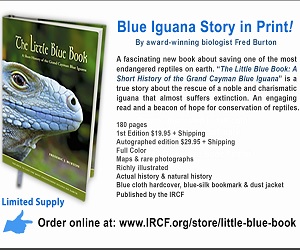 | mobile - desktop |
 |
 3 months for $50.00 |
News & Events:
|
Featured ContributorsWith our Featured Contributors program, kingsnake.com brings you the latest news and updates from the biggest names in reptiles and amphibians, to share their decades of experience and knowledge with our community.
What’s Green, Slender, and Has Keeled Belly Scales? (Richard Bartlett) - Monday, Apr 15, 2024
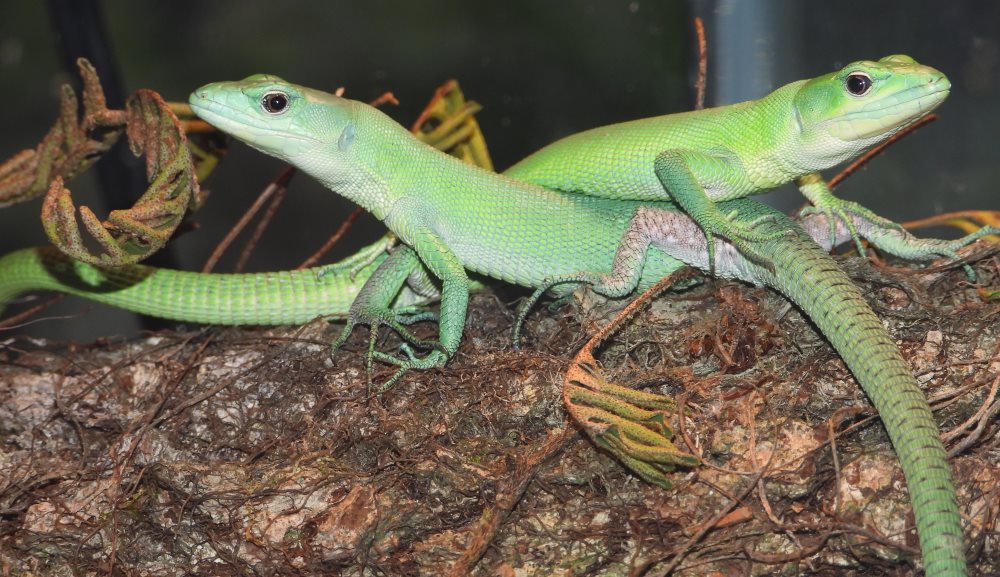 All 3 photos are of this beautiful East African taxon. The genus name, Gastropholis, refers to the belly and prasina, the species name refers to the green coloration. Family: Lacertidae; Wall and Jewel Lizards. Color: Basically a vibrant green except for rear of legs that is blue-gray. Often has a bluish tinge on lips and throat. If frightened/insecure the overall color may fade to a duller green. Females may be a bit paler than the males. Lizard Size: A relatively slender 12 to 16+ inches of which 70% is the weakly, but effectively, prehensile tail. The digits are long, slender, visibly jointed, and ideal for an arboreal existence. Scalation: Scales keeled and finely granular dorsally. Lateral scales are smallest in the upper rows but increase in size as they descend and meet the 6 longitudinal rows of visibly keeled belly (ventral) larger and visibly keeled.ventral ing-Disposition: Males (and occasional females) are agonistic to others of the same sex. Preferred Temperatures and activity period:Diurnal; 75-85F (24-30C) Terrarium Size/Type suggested: Upright format at least 30 and preferably 40 gallon size, planted, humid forest with sturdy climbing limbs. Natural History: Coastal area of Tanzania and Kenya. An arboreal lizard of variable forested conditions, trees and shrubs. Comments: Of the 4 species in this genus, three, G. tropidopholis, G. vittata, and G. prasina, are green in color and arboreal. The 4th taxon G. vittata,is basically terrestrial and buff-striped brown in color..Ventral scales are strongly keeled. Only one, G. prasina, is currently (Feb. 2024) available in the American pet industry. Much has been learned about the natural history of this lizard from both captive breeders and field observers. Notes from the field observers, published in “A Field Guide to the Reptiles of East Africa (written by Stephen Spawls Robert Drewer, Kim Howell and James Ashe) informs us of the arboreal tendencies of prasina in the coastal woodlands, but mentions also that examples have been found in terrestrial locations. Eggs have been found both in damp tree hollows and in terraria. One clutch numbered 5 eggs and incubation duration was 61 days at 79F. Continue reading "What’s Green, Slender, and Has Keeled Belly Scales?" Hispaniolan Cat-eyed or Hog-nosed Snake, revisited (Richard Bartlett) - Monday, Apr 08, 2024
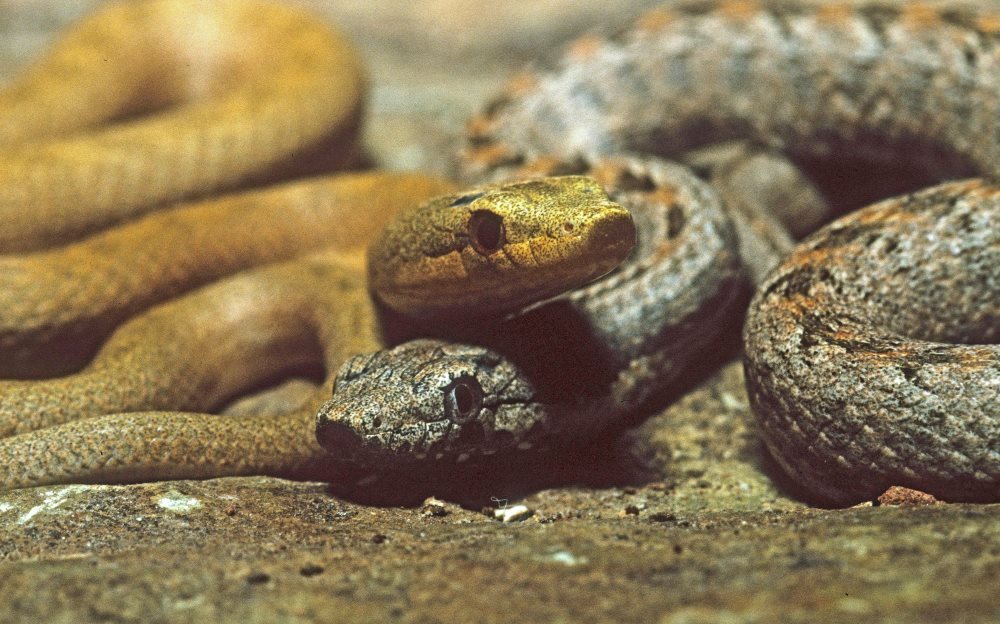 Hispaniolan Cat-eyed Snakes occur in many colors and patterns. I’m revisiting this species hoping that somewhere in the world, someone has a breeding pair and will offer additional information on this Hispaniolan beauty. Hypsirhyncus ferox, the Hispaniolan Cat-eyed or Hog-nosed Snake, is an interesting little dipsadine species about which very little is written. It is occasionally called the Haitian Hog-nosed Racer. All common names are well deserved, this snake having elliptical pupils, a flattened slightly upturned rostrum, and quickly and agilely fleeing any undue disturbances. This little snake occurs in several colors that vary from dark gray to red with various browns and pinks between the 2. The snake may lack dorsal and lateral patterning or be heavily patterned, often moreso dorsally than laterally, but may also have light or dark lateral striping. Long a single species found in both Hispaniolan countries and having 3 subspecies, recently it has been revisited by geneticists and (surprise, surprise!) has now been split into 2 species, one of which has 2 ssp. Adult size is about 15 inches and prey includes lizards and frogs. Cat-eyed Snakes can move agilely and quickly, rapidly disappearing when disturbed, escaping into or benearh underbrush or other readily available cover. Over the years I have maintained a few as captive and found them to be secretive but hardy, readily feeding on anoles. Other than the fact that this is an oviparous snake, little is known about its breeding methodology. This snake was not often offered even in the heyday of herp importing. Should you see them offered today and choose to have a small, easily maintained oddity, act quickly. And please let me know if there are extras. I’m looking too. Continue reading "Hispaniolan Cat-eyed or Hog-nosed Snake, revisited" Spotted Red Trope (Richard Bartlett) - Monday, Apr 01, 2024
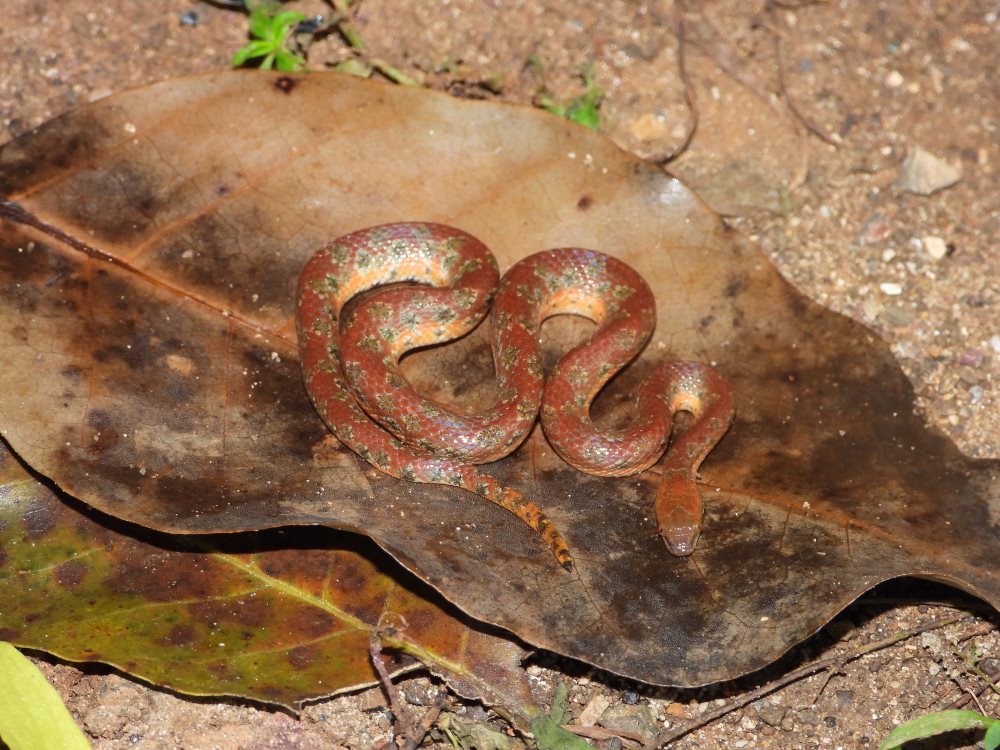 Once seen, our attention immediately turned from birds to snakes. We looked long and hard for this little Trope, Tropidophis maculatus, and when they were found is was entirely by accident. Accident or not, we were elated. Our tour leader, Dr. Luis Diaz, had taken us to a Conservation Area where he and we were welcomed by the caretaker. We were looking in particular for Cuban Grassfinches, and we were delighted to see two small flocks along a grassy, palm shaded, roadway. Of course, lying beneath each palm were fair numbers of dead fronds that we simply could not walk by without turning. Smart move, that. Because beneath the fallen fronds were numbers of broken cinderblocks and many turnable,flat rocks and chunks of concrete.Together these all held a bit of moisture on the reddish earth, so several rocks were carefully turned and just as carefully replaced. Soon someone said “snake!” So, within moments of arriving we had in hand one of our several target species, the Spotted Red Trope (old name, Dwarf Boa) that had found suitable temperatures and moisture beneath the debris. And we truly had lucked out, because under the fronds and beneath other rocks, we found several additional examples. This is one of the smaller trope species,being fully adult at 12 to 15 inches in length. Most found by us were in the 8-10 inch range indicating this to be a good breeding site. Great memories to share, of a species seldom seen except in its homeland. Continue reading "Spotted Red Trope" Racerlets and the Lesser Racer of Cuba (Richard Bartlett) - Monday, Mar 25, 2024
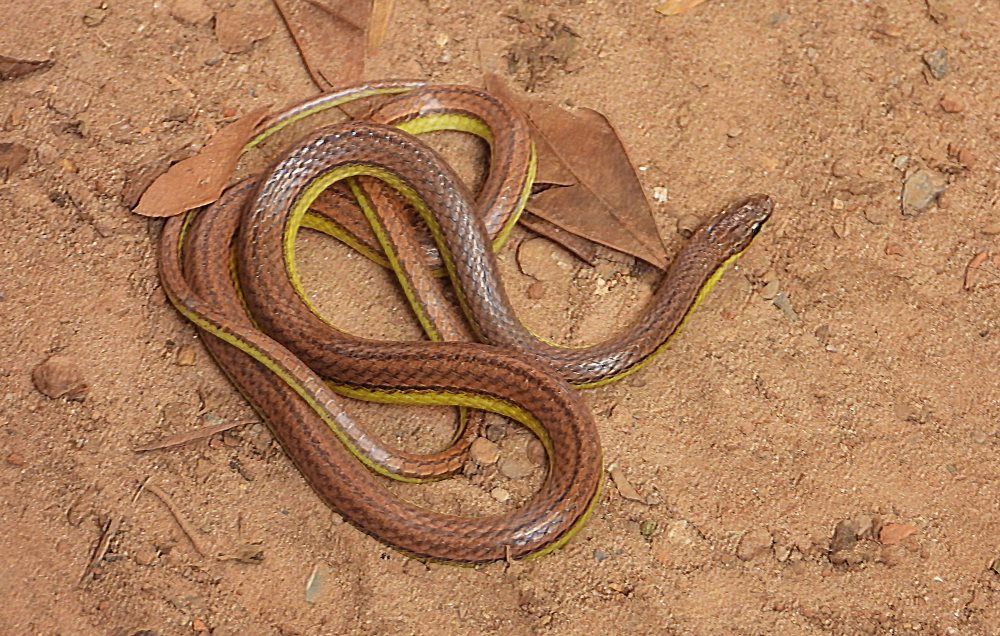 Arrhyton tanyplectum, Guaniguanico Racerlet Small, slender, speedy, and quite secretive describes the appearance and habits of all members of this grouping. All, like the much larger Cuban Racer, Cubophis cantherigerus, are rear-fanged members of the family Dipsadidae. Those pictured here are of the genera Arrhyton, the Racerlets, and Caraiba, the Lesser Racer.. All are usually reluctant to bite, and of no danger to humans. I make no attempt to identify or differentiate Arrhyton taxa herein, but merely mention some often overlapping generalities as to colors and patterns. Dorsally and laterally, snakes of the genus Arrhyton are clad in shades of brown. The hues may varying from near-black to a light bronze or silvery-gray. The belly is yellowish. Depending on species, as well as on individual variations, vertebral and lateral stripes may be strongly present or absent. One species has a prominent whitish collar, another has a yellowish collar broken dorsally, and many have black or brown crowns. The Cuban Lesser Racer, Caraiba andreae, on the other hand is a small but variably marked black and white snake (black above, white below) with a prominent light stripe from nose, to above each eye, and continuing to the back of the head. The labials (lip scales) are also white to cream. The result of these light stripes, of course, leaves a prominent dark stripe through each eye. And now to the pix. Continue reading "Racerlets and the Lesser Racer of Cuba" About Our Featured Writers and Contributors
|
Sponsored Link
|







